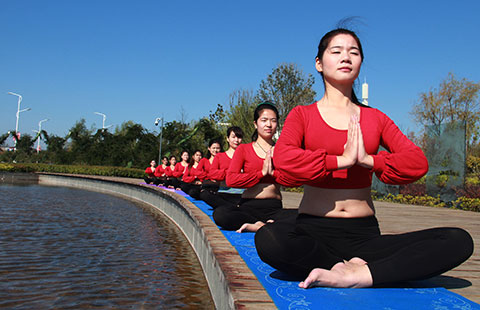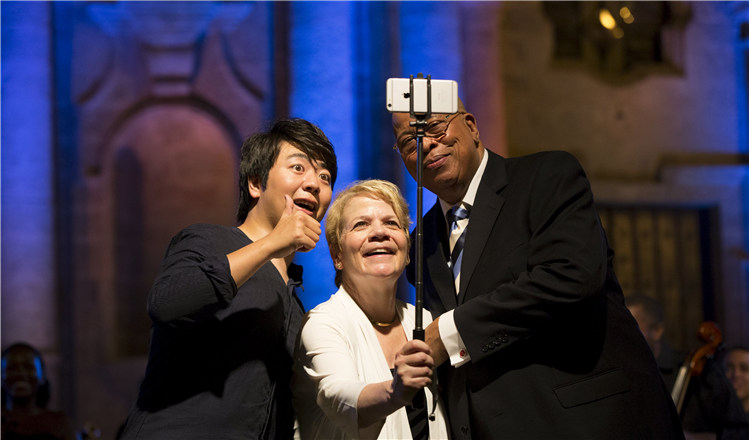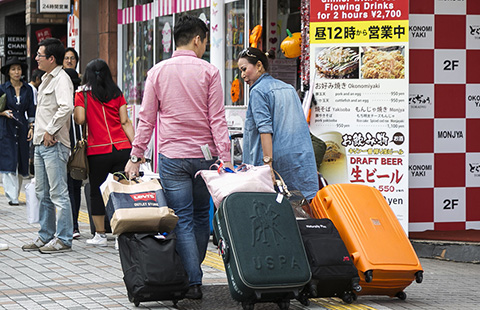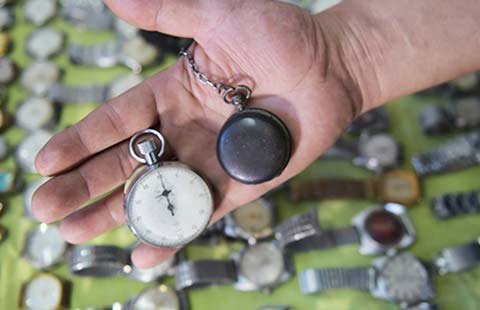A Uygur photographer's fight against regional stereotypes
Updated: 2015-10-13 15:01
(Xinhua)
|
||||||||
XINJIANGERS THROUGH LENS
Kurbanjan's name means "sacrifice", chosen as he was born during Islamic festival the Feast of Sacrifice.
He was born in Hotan Prefecture, source of a type of jade known for its soft and warm characteristics. However, his character is just the opposite.
His father, a 60-year-old jade businessman who had visited the country's inland areas in the 1980s, understands the importance of education. Kurbanjan and his siblings have moved schools three times for better education.
He started learning to box at 16. "I believed then fists could conquer all," he says.
In addition to the former boxing champion of the world Mike Tyson, his other two idols are Chinese actor Jackie Chan and war photographer Steve McCurry
Kurbanjan's love of photography began in 1999, "accidentally".
Planning to spend his savings of 3,000 yuan (around 484 U.S. dollars) on a guitar to charm the girls at school, he was instead captivated by a camera shop's display on his way to the guitar store. Kurbanjan went in and bought his first SLR.
He has been obsessed with taking pictures of beautiful landscapes and diverse cultures in Xinjiang ever since.
In 2006, he came to Beijing, more than 3,000 kilometers away from his hometown, in search of a better life and more opportunities.
Here he met his wife, a Beijing-born Uygur, orchestrated a number of award-winning photo exhibitions and participated in the shooting of documentary films, but he was troubled by one problem -- people's lack of understanding of Xinjiangers.
He was shocked by the rioting in the regional capital Urumqi on July 5, 2009. "I came to realize that fists cannot resolve all problems," Kurbanjan says.
He wanted to tell others that a few bad apples cannot represent all of Xinjiangers, and decided to do something through his lens.
"I tried to enhance people's understanding of Xinjiang through stunning landscape images, but found that real stories are the most eloquent way to talk about the people in Xinjiang," he says.
The terrorist attack at Kunming Railway Station in March 2014 bolstered his resolve. He traveled to 20 cities to photograph and interview about 500 Xinjiangers including doctors, celebrities, street vendors and thieves.
Kurbanjan has tried to make his photo essay objective, covering different Xinjiang people and their stories. "We are all Chinese no matter where we are from -- Xinjiang, Beijing or Guangdong," he says.
- Journey out west to Xinjiang
- Special: A day in the life of ordinary people in Xinjiang
- Scenery of golden populus diversifolia trees in Xinjiang
- Life in Xinjiang is getting better and better: French writer
- Autumn scenery of Kanas in NW China's Xinjiang
- Special stamp set for 60th anniversary of autonomy of Xinjiang released
- Xinjiang to focus on maintaining stability
- Air pollution dominates complaints to environmental ministry
- WHO calls for stricter curbs on tobacco promotion in China
- Pilot risks own life to save others after plane's engine fails
- Palace Museum's western part opens for first time in 90 years
- Suspect of fishing boat murder caught in E China
- 'Queen of Ivory' faces charge in Tanzania

 Staring contests give gazing a competitive edge
Staring contests give gazing a competitive edge
 Girl who quit her job to travel the world
Girl who quit her job to travel the world
 When pups catch up to hip-hop style
When pups catch up to hip-hop style
 Yoga enthusiasts in harmony with nature
Yoga enthusiasts in harmony with nature
 Asia's top 10 richest families
Asia's top 10 richest families
 Musical selfie
Musical selfie
 Chinese spending spree drives Japanese economy
Chinese spending spree drives Japanese economy
 Chasing time: Man amasses large watch collection
Chasing time: Man amasses large watch collection
Most Viewed
Editor's Picks

|

|

|

|

|

|
Today's Top News
Tu first Chinese to win Nobel Prize in Medicine
Huntsman says Sino-US relationship needs common goals
Xi pledges $2 billion to help developing countries
Young people from US look forward to Xi's state visit: Survey
US to accept more refugees than planned
Li calls on State-owned firms to tap more global markets
Apple's iOS App Store suffers first major attack
Japan enacts new security laws to overturn postwar pacifism
US Weekly

|

|








